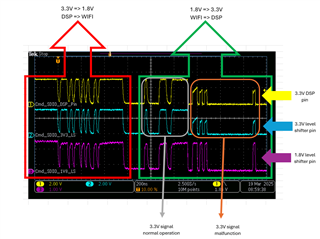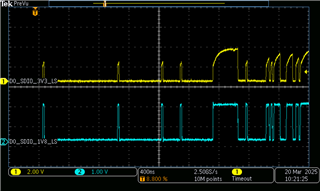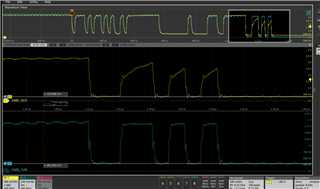Other Parts Discussed in Thread: CC3301, TXS0206, TXS0108E
Tool/software:
Hi
I'm using LSF0108 for SDIO communication between Microchip DSP 3.3V (ATSAMA5D27C-CNR) and Ti WIFI chip 1.8V (CC3301)
See attached Schematics

For B side I having PU Resistors of 2.49k
For A side I having NO PU Resistors
Pins 3,10,11,18 are Not in use
I have measured the CMD and Data signal at I see that during the translation up (meanig 1.8V =>3.3V, from WIFI to DSP) my signal is less square and looks more capacitance

you can see from the pic above that it the begging of the translation up the signals looks OK, but after the malfunction start
In this pic I have measured the Do signal:


